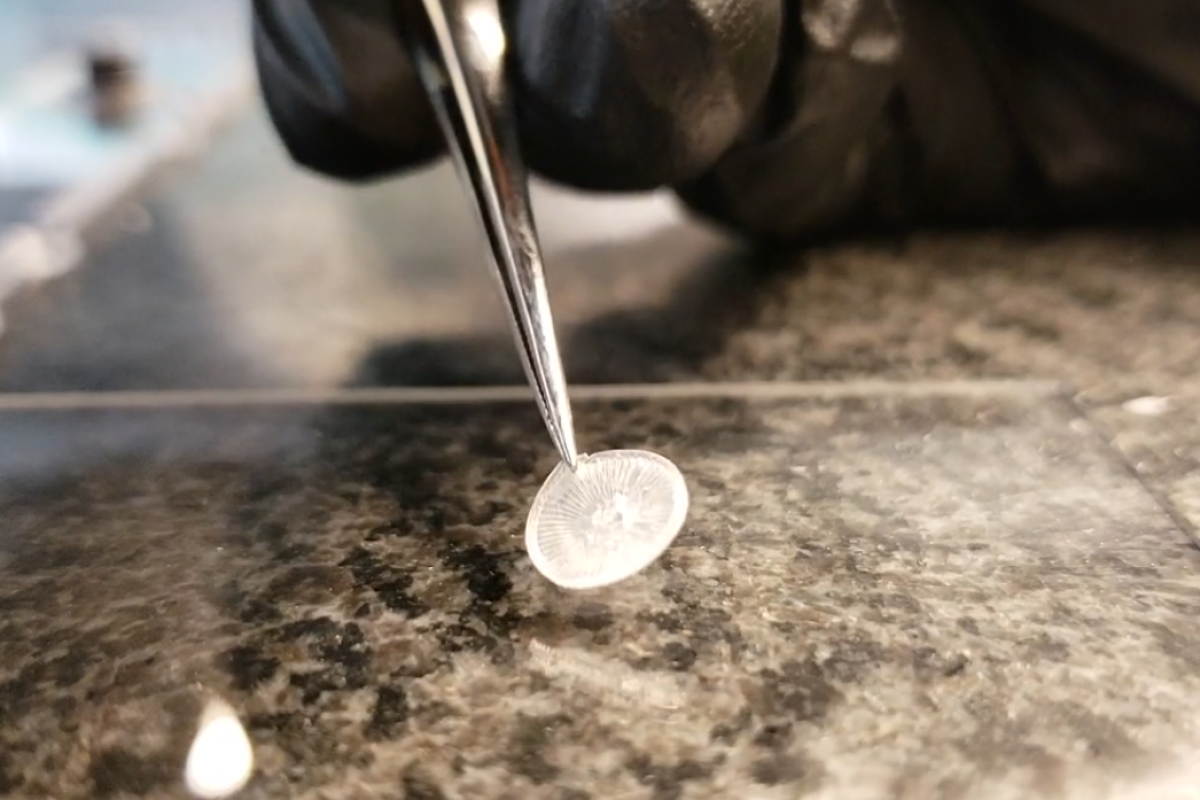Perforations in the eardrum lead to pain and impaired hearing, and can be tricky to repair. The PhonoGraft, developed by Harvard scientists, is a 3D-printed implant that can patch up the damage by encouraging natural cells to regrow, and now it’s entered commercial production.
The tympanic membrane, better known as the eardrum, is a thin, circular piece of tissue that vibrates in response to sound waves and converts those into electrical signals that the brain can interpret. But it can’t do that job as well if it’s punctured by foreign objects like cotton tips or injuries from extremely loud noises. To make matters worse, with that barrier open viruses and bacteria can get into the inner ear and cause serious infection.
Currently the best treatment is what’s known as a tympanoplasty, which involves repairing the hole using grafts of the patient’s own tissue. But the end result doesn’t conduct sound as well as a healthy eardrum, the procedure requires making an incision behind the ear, and it can often fail and need to be performed again.
The PhonoGraft is designed to solve those problems. The implant mimics the intricate shape of the natural eardrum, which is patterned with “spokes” like a bike wheel, and it’s made of a specially developed synthetic polymer-based ink for 3D printing. Not only does the implant itself work to restore hearing, but it provides a scaffold for the recipient’s own cells to regenerate. Tests in chinchillas, which have similar ear anatomy and hearing ranges to humans, proved promising.

“Three months after implanting our optimized graft into the chinchilla’s ear, we had a genuine eureka moment,” says Aaron Remenschneider, a researcher on the project. “The hearing tests indicated full restoration of sound conduction, which has been a big hurdle. Then we took our first peek down the ear canal with the endoscope. What we were seeing was merely the ghost of our graft that was being replaced with new tissue – a beautifully reconstructed eardrum with its radial-circular pattern.”
As an added bonus, the PhonoGraft can be inserted through the ear canal, making the process less invasive.
In order to bring the device to market, Harvard’s Wyss Institute spun out a startup called Beacon Bio, which was recently acquired by Desktop Health – a step that makes it ready for market, apparently. The team is now working to obtain FDA clearance to bring the PhonoGraft to human patients. Other similar implants are also in the works, such as the ClearDrum in Australia.
The team demonstrates the device in the video below.
Source: Harvard Wyss Institute






